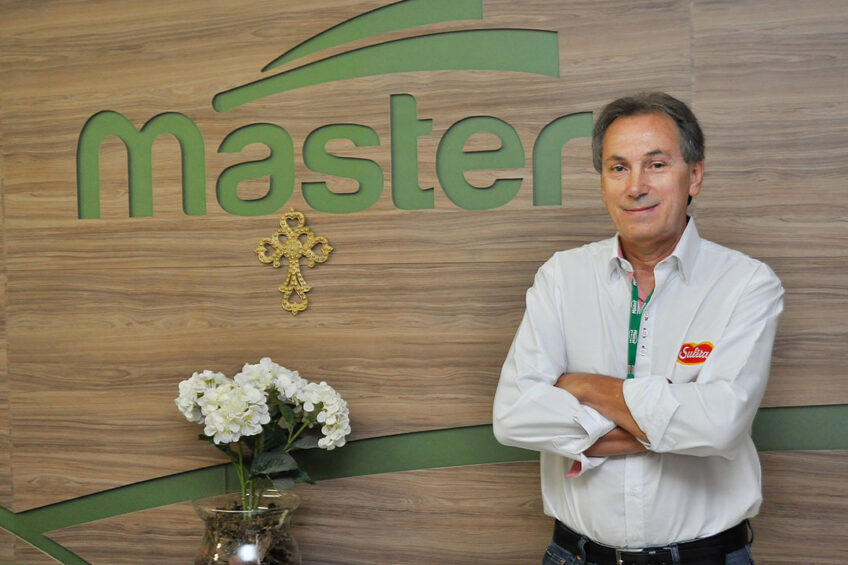INTERVIEW: In charge of over half a million pigs

Over half a million pigs – that is the size of the herd of Master Agroindustrial, a large swine-producing company in Santa Catarina state, Brazil. Mario Faccin has spent the last 27 years building the company – and he has not finished yet.
Although Brazil may have dodged a bullet in having no cases of African Swine Fever (ASF) in pigs, the country is plagued by new highly infectious variants of Covid-19 in people. Master Agroindustrial employs 1,200 people on its farms and slaughter facilities and has big plans to expand the facilities and add 600 more staff this year.
Labour availability is just one of the challenges faced by company boss Mario Faccin, but he is moving fast to increase production. Mario has been in the pig production industry for the past 46 years and has spent the last 27 of those building Master Agroindustrial, which produces, slaughters and processes all its own pigs.
What is your background in the pig industry?
“I am now 67 and have worked my way up the ladder, first starting off as a farm assistant, then gradually moving into management. Master Agroindustrial is located in the south of Brazil in the state of Santa Catarina, a traditional pig-producing, processing and exporting region.”
What type of farms do you run and how many pigs do you produce?
“Our system is organised into a number of different sections. There are nine farms called Sites 1 that hold 35,000 breeding stock. These units are owned by the company and produce weaned piglets. Also included in the system are 32 more farms called Sites 2, that we transfer the weaned piglets to and contract rear them up to 23kg. From here they are then transferred to another group of farmers called Sites 3, where they are finished. In total, we have over 270 farmers who finish these animals until they reach slaughter weight at 125kg. Sites 2 and 3 are small rural producers that make up the majority system of the company, which comprises, as a whole, a herd of over 500,000 pigs at different ages.”
At what age and weight do you slaughter and where do you market the meat?
“We have a total annual production of around one million pigs and usually we slaughter them at the age of 165 days with a slaughter weight in the range 125–128kg. Of the production of approximately one million pigs we sell around half to other agri-markets. The rest we slaughter, process and market with our own brand, Sulita, which serves the domestic market and partly exports to several countries.”

Which breeds do you use and why? What is your average litter size?
“We have a partnership with two genetic companies, PIC and DanBred, because we believe they will bring greater economic results. The average of total births/farrowing in 2020 was 15.70 piglets per sow.”
What exactly do you feed the pigs and what quantity per head per day?
“There are a number of different pig feed diets that are based on corn and soybean meal, complemented by other ingredients that are technically necessary for a perfect balance of needs. They are fed in various quantities and quality according to the different ages at each stage of production. On average each animal in the herd consumes something close to 1.52kg per day.”
Where do you get the feed from? Do you grow it yourselves?
“Brazil is a major producer of these inputs. We supply our producers with the basic inputs and other ingredients such as vitamins and minerals. Some of these, including lysine and methionine, are imported from other countries.”
What is your average mortality rate for piglets? Older pigs?
“Our maternity mortality rate is close to 10% or 11.0%, and mortality in the final phase is between 4% and 4.5%.”
How do you try to prevent the entry of diseases?
“Our entire system has biosecurity rules in place that protect us from exotic diseases such as ASF or Porcine Reproductive and Respiratory Syndrome, among others.”

What are the main challenges for pig farmers there?
“We encounter the normal challenges inherent with running a large-scale production facility. These include issues with sanitation, market economics, qualified and available good operational labour, logistics, compliance with environmental laws and many more.”
Are you investing in new technology on the farm?
“We often seek to update our units with new technologies within the productive structure, in information technology and in the handling of animals. Also we are looking at more automation to ease labour, at product innovation, new food product presentation, more digital media, at logistics and new technology to boost our marketing actions.”

What about labour? How many people work there and where are they from?
“My role, with the help of many people, is to manage the business, design and develop new businesses, make the company grow safely and provide growth and quality of life for people and the communities where we operate. Today, we have 1,200 employees and further support a large number of others involved in our business, including small rural producers, transporters and other service providers. Our growth plan foresees, at the end of this year, to add 600 more people in our industrial operation, since we are currently investing in the expansion of our two industrial units and expanding our production base in the field.”
What makes your company and your staff stand out among the others and prosper?
“We are very committed and prepared people maintaining high values of animal welfare and care for the environment. We pride ourselves in keeping up with market and consumer trends, taking care of the company’s financial health and gaining greater respect from consumers every day.”











